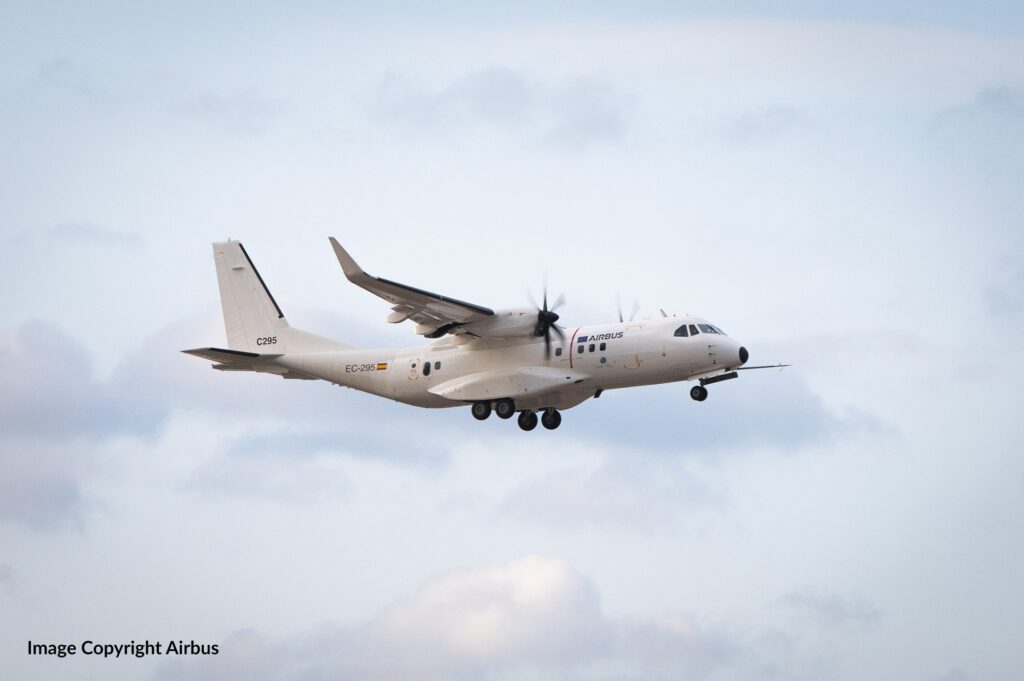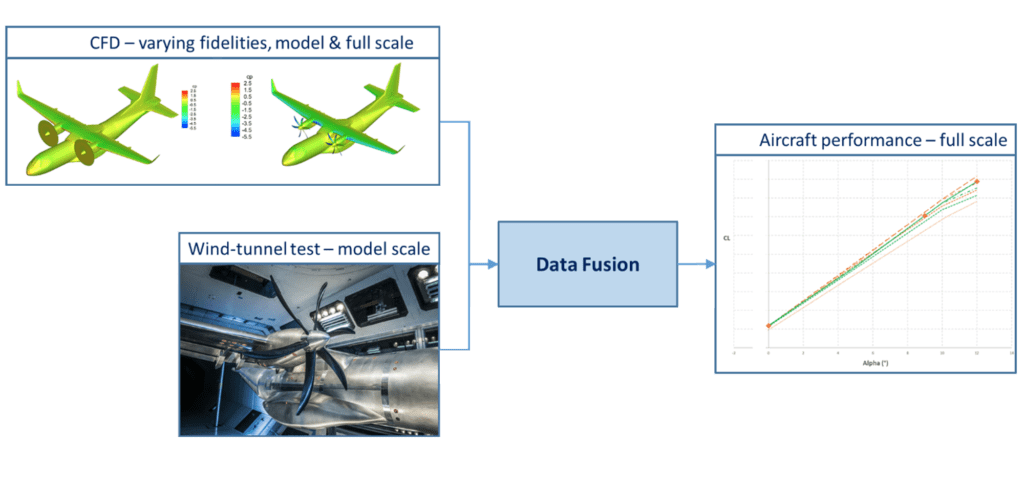The PERTURB Project – A Step Towards Smart Testing
ARA has recently completed work on a Clean Sky 2 project called PERTURB, which was part of the Regional Aircraft domain within the overall Clean Sky Joint Undertaking (CSJU) as part of Horizon 2020. This project – one of a series involving ARA in this domain – focussed on the aerodynamics of an integrated technologies demonstrator (Flying Test Bed 2, FTB#2), whose aim was to demonstrate active load control devices, e.g. the use of spoilers and ailerons to redistribute loading along the wing span, as a route to more environmentally friendly aircraft with lower emissions.
The FTB#2 (image below), although based on an existing military transport aircraft, represents a regional turboprop. Previously, ARA played a key part in the POLITE and ReLOAD projects, both of which fed outputs into PERTURB.

The particular aim of the PERTURB project was to understand the aerodynamics of the powered aircraft, i.e. both the performance of the propellers (thrust, torque etc.) and the effect of the propellers’ wakes on the downstream airframe. This had to be done with high fidelity, as the aerodynamic data from PERTURB was used in the permit-to-fly activities at Airbus Defence and Space.
It was decided to obtain the required data using a combination of wind-tunnel testing and computer simulation (CFD), with the testing being the more trusted across the flight envelope. However, even though part of the testing was performed in a pressurised wind tunnel with a scaled model, the Reynolds number of the full-scale aircraft could not be achieved in the test; therefore, CFD had to be used to extrapolate the test data to full scale. An additional problem was that CFD simulations of rotating propellers are very costly, so a cheaper alternative had to be found.
Coincident with grant-funded research projects like PERTURB, ARA is investigating how it can move to smarter wind-tunnel testing practices in the future. Complementary use of CFD and testing is part of this ‘Smart Testing’, leading to more effective use of wind tunnel wind-on time, with overall outputs that give greater insight into the aerodynamics than sole use of either CFD or testing.
The PERTURB project acted as an exemplar of one aspect of Smart Testing. CFD was performed at two different fidelities: a more efficient one using actuator disks to represent the propellers and a more accurate, but more costly one using rotating propellers within the simulation. More solutions were obtained for the former than the latter, to keep the overall simulation cost low, but the CFD data from the two fidelities were ‘fused’ together to give a high-accuracy CFD prediction. The CFD covered Reynolds numbers from model scale to full scale and this output could then be combined with the wind-tunnel test data in a further fusion process, to effectively extrapolate the test data to full scale, while still retaining high confidence in the final data (schematic below).

The findings from PERTURB take ARA one step down the Smart Testing path and, along with other research activities in the company, will help to redefine how aerodynamic data are acquired and used in the future.

